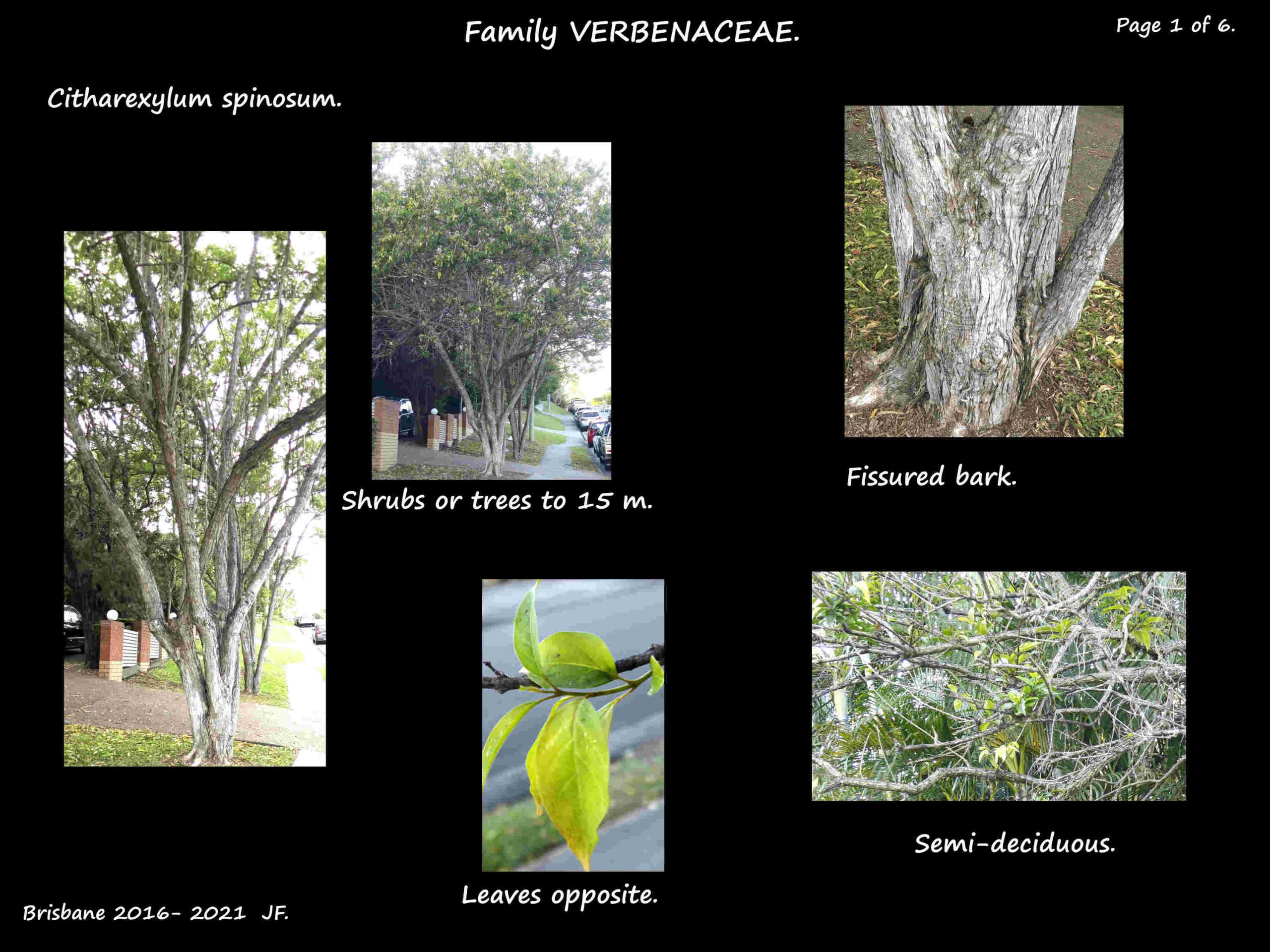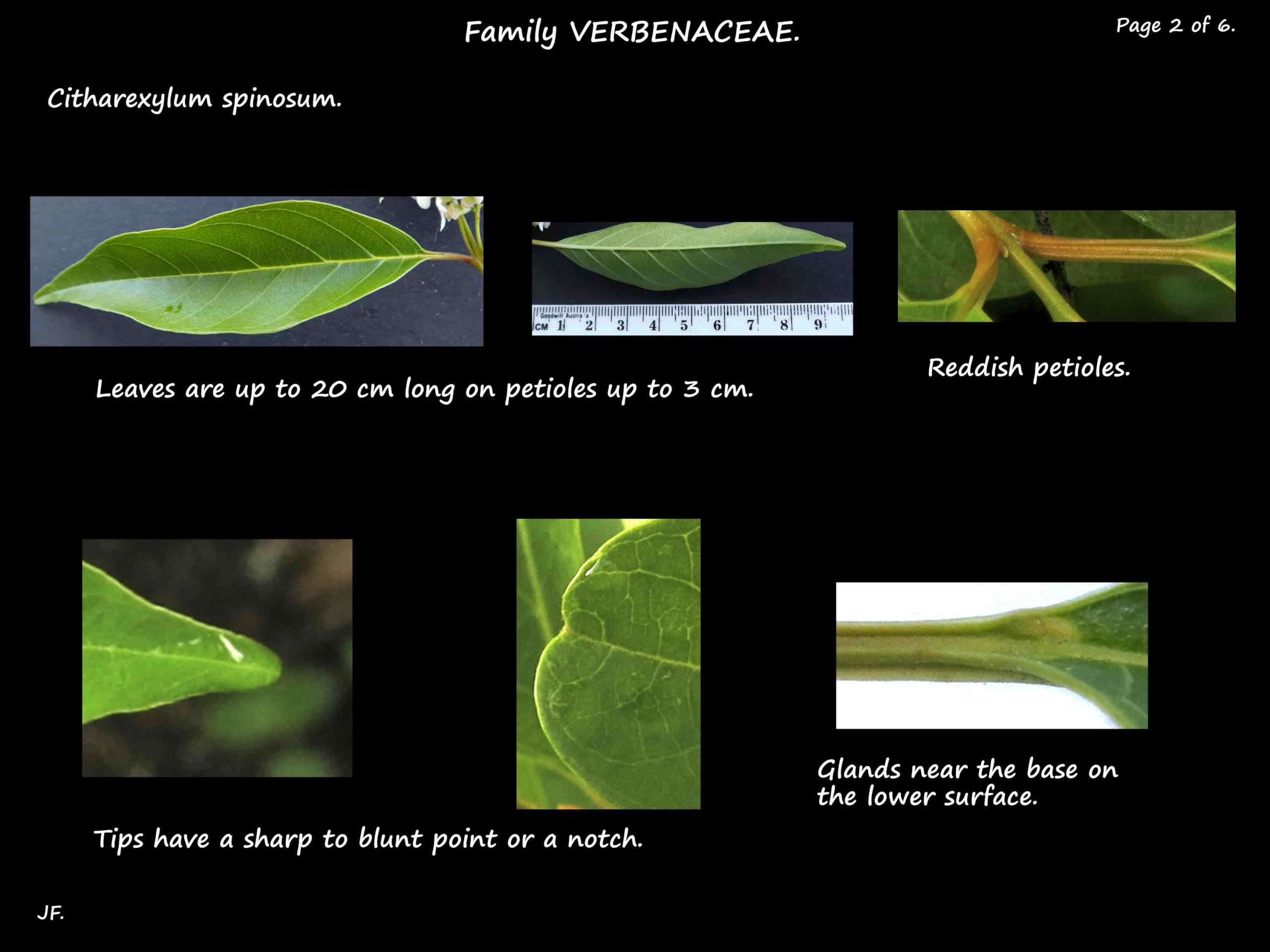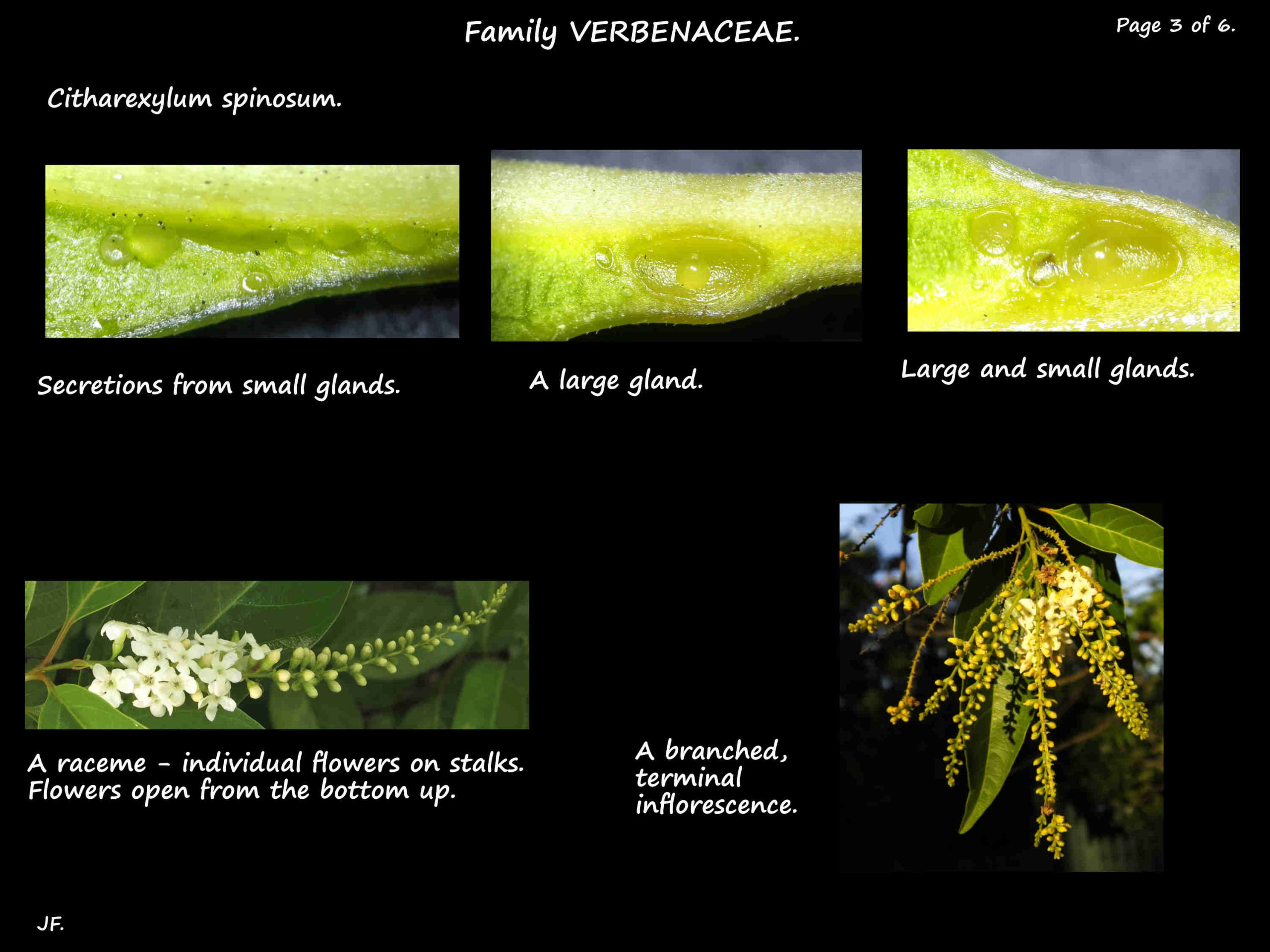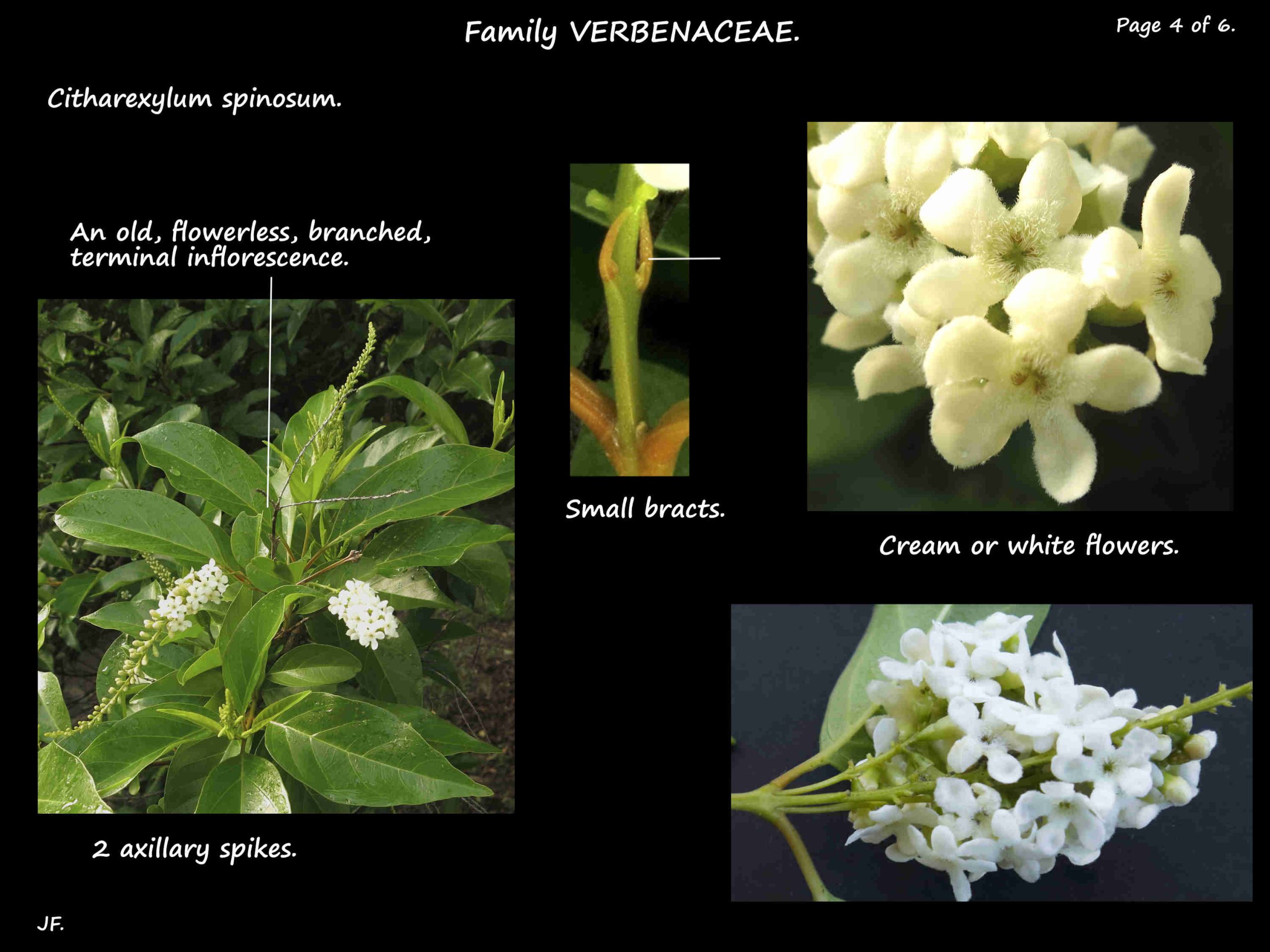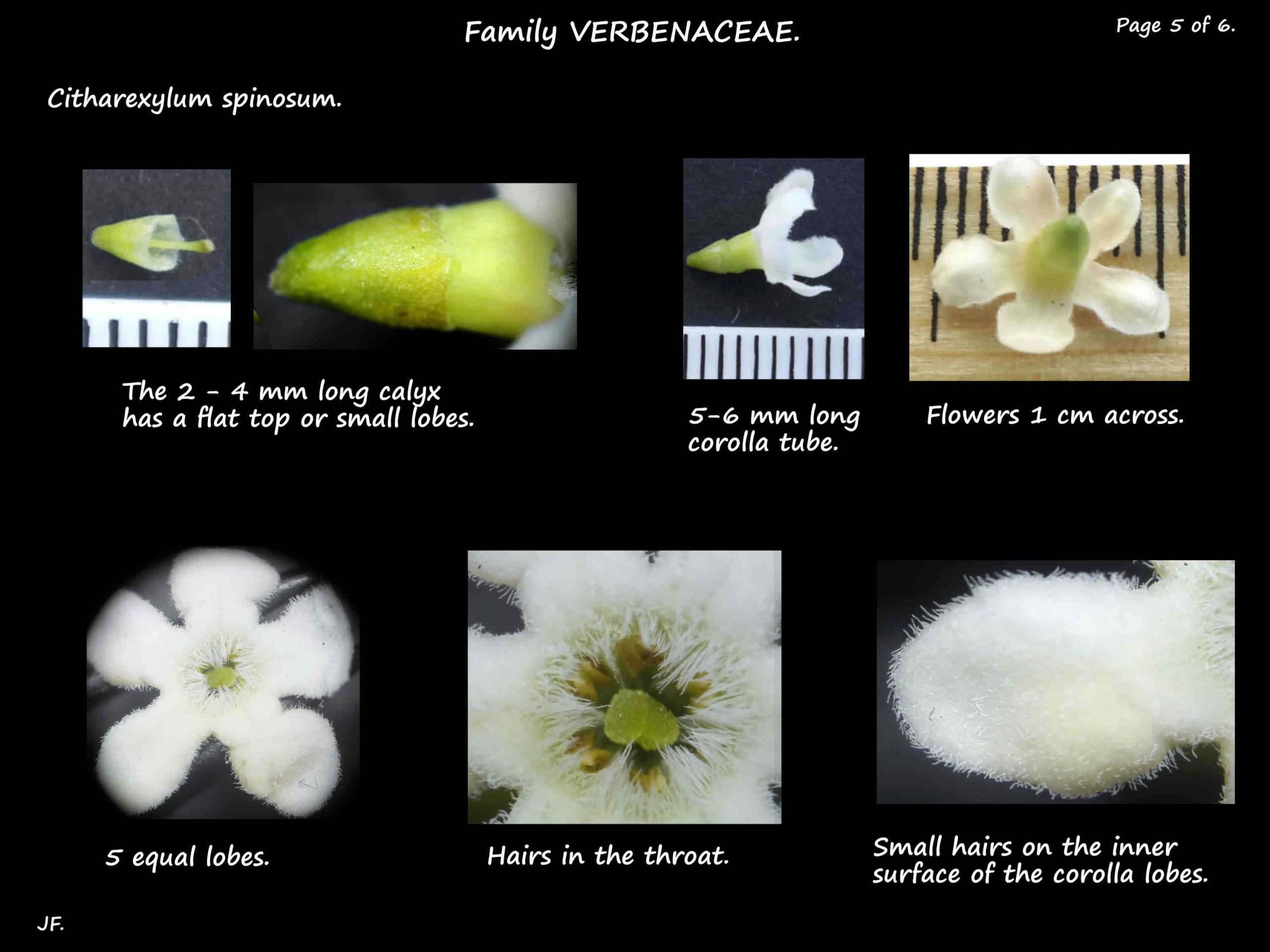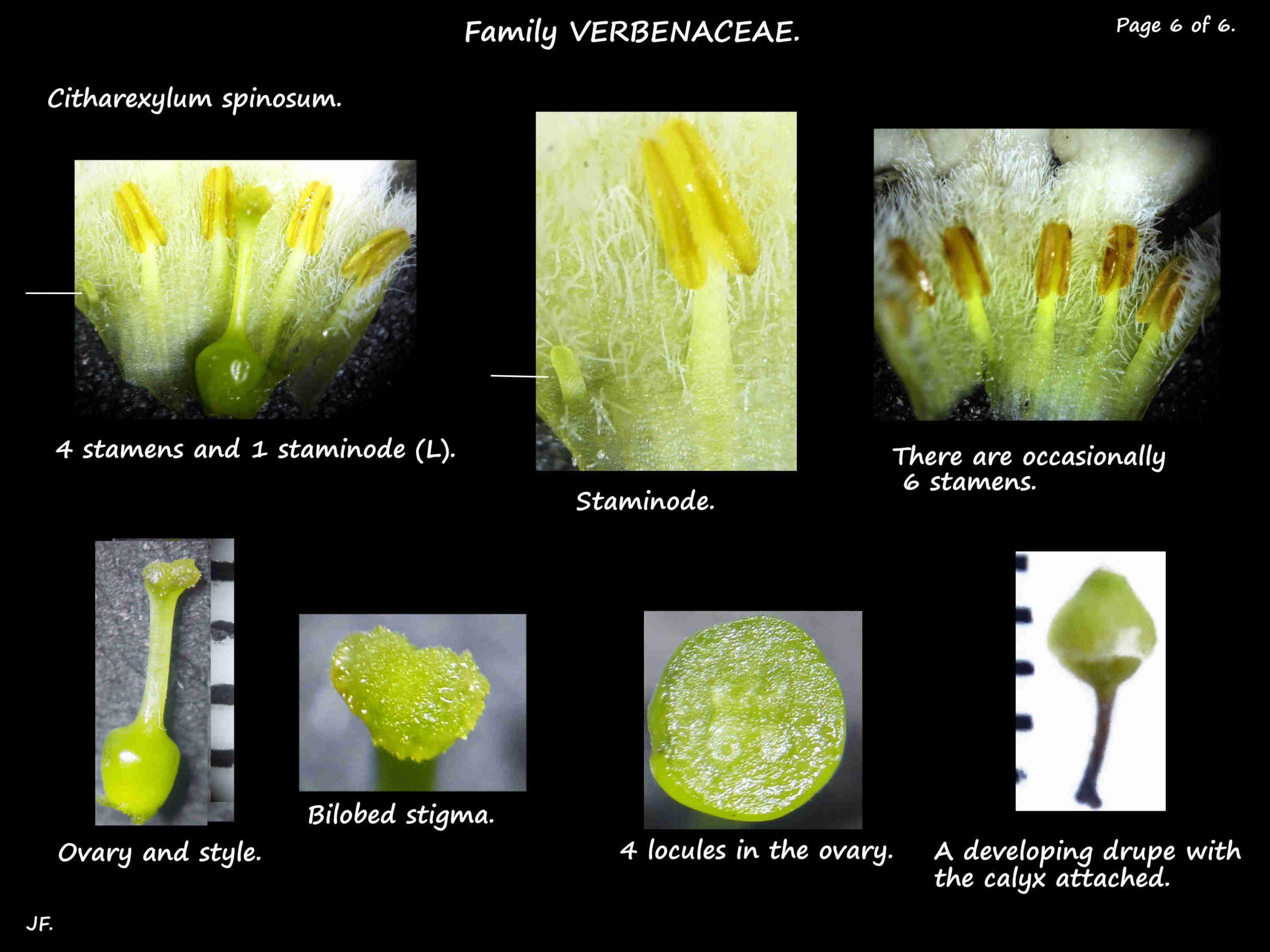Citharexylum spinosum.
In Family Verbenaceae there are over 100 species from around North and South America.
C. spinosum, the type species, has many synonyms including Citharexylum fruticosum
and Citharexylum quadrangulare.
Fiddlewood grows as a shrub or a small semi-deciduous or evergreen tree up to 15 m.
The brown bark is fissured and the smaller branches are 4-angled.
There are sometimes spines.
The leaves can be opposite, alternate, in groups of 3’s or whorled.
The blades are up to around 20 cm long on petioles up to 3 cm long.
The petioles, and sometimes the lower midrib, are reddish-orange.
The blades can be ovate, obovate or elliptic to lanceolate.
The tip can be pointed or notched, the base is wedge-shaped and there are no teeth.
There are sometimes glands on the lower surface at the base of the blade.
There may be some hairs on either or both surfaces but mainly underneath.
Inflorescences are mostly terminal spikes, on stalks up to 5 cm long, with some axillary.
Up to around 35 cm long they can be simple or branched and are often pendulous.
There are small hairy bracts.
The spikes are racemes with the lower flowers opening first.
The plants are dioecious with flowers that are functionally male or female on the same tree.
The calyx tube has a flat top or 5 small lobes on the rim.
It is a pale green and around 3 mm long.
The bases of the petals are fused into a narrow tube up to 6 mm long.
The 5 (4 – 6) unequal lobes spread outwards to form a corolla 1 cm across.
The petals are cream or white and may have a greenish, yellow or red tint.
There are hairs in the throat and much shorter ones on the inner surface of the lobes.
There are 4 (5 – 6) stamens that insert among the hairs near the top of the corolla tube.
They are commonly in 2 pairs of slightly different lengths with 1 or 2 staminodes.
The superior ovary of 2 carpels typically has 4 locules each with 1 ovule.
The stout style has a small, 2-lobed stigma.
The fruit are roughly spherical drupes up to 1 cm long with the calyx remaining at the base.
They mature from green to red then deep purple or black.
J.F.
